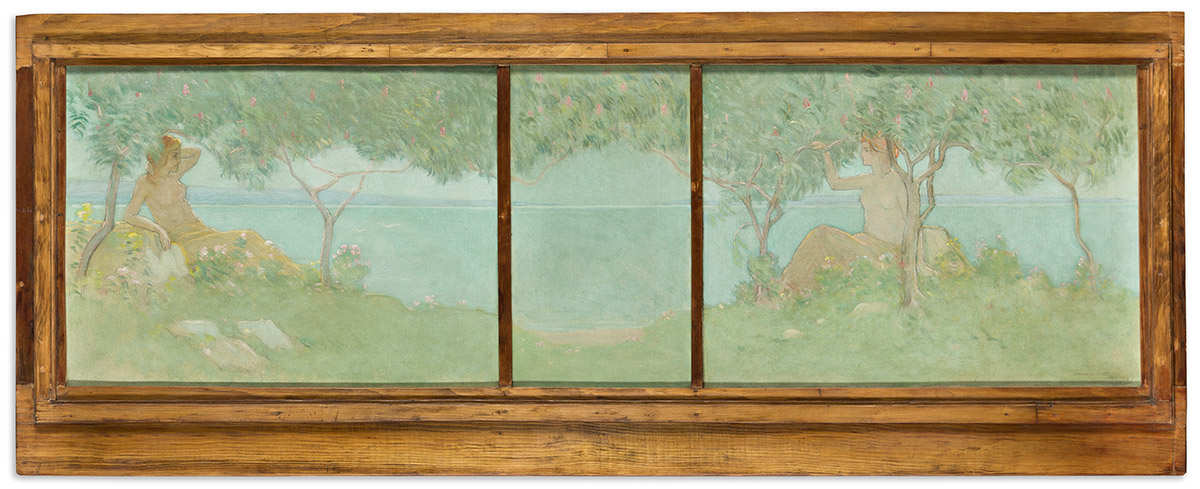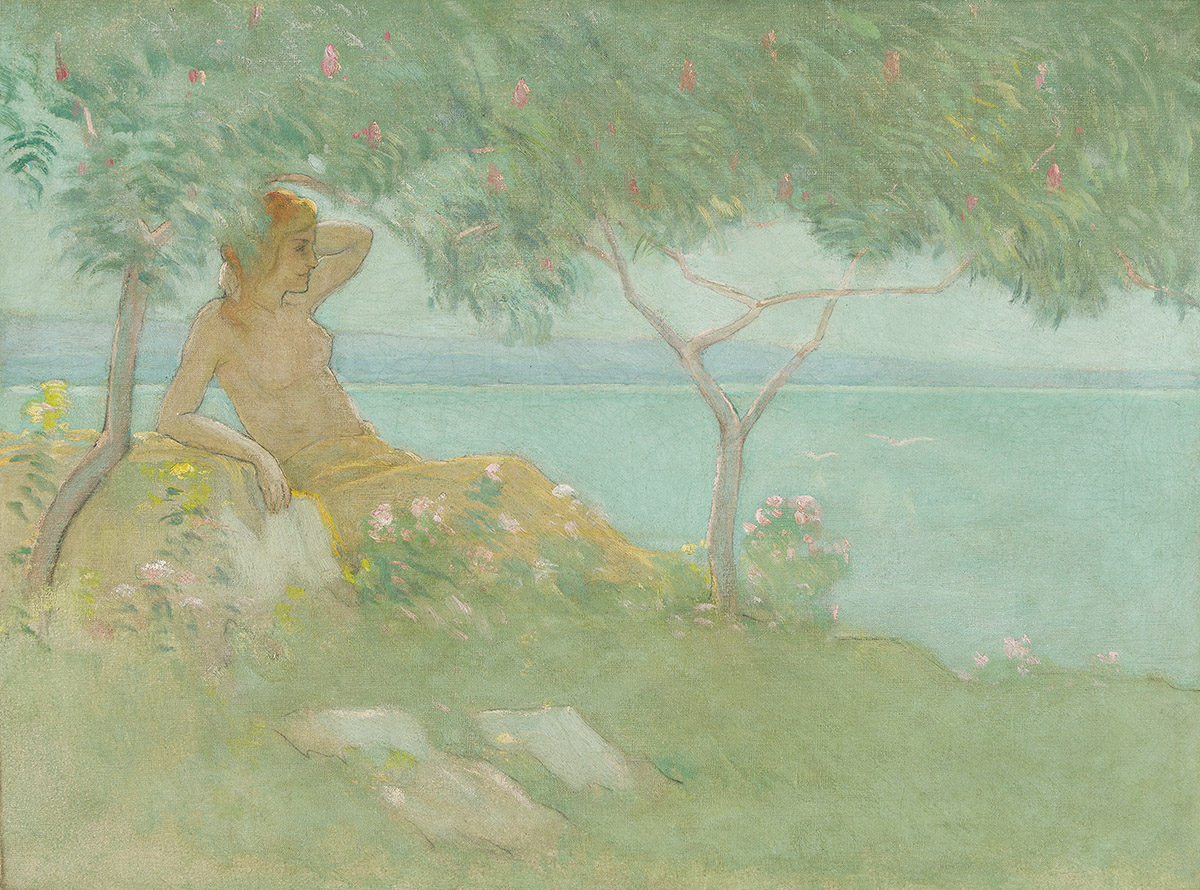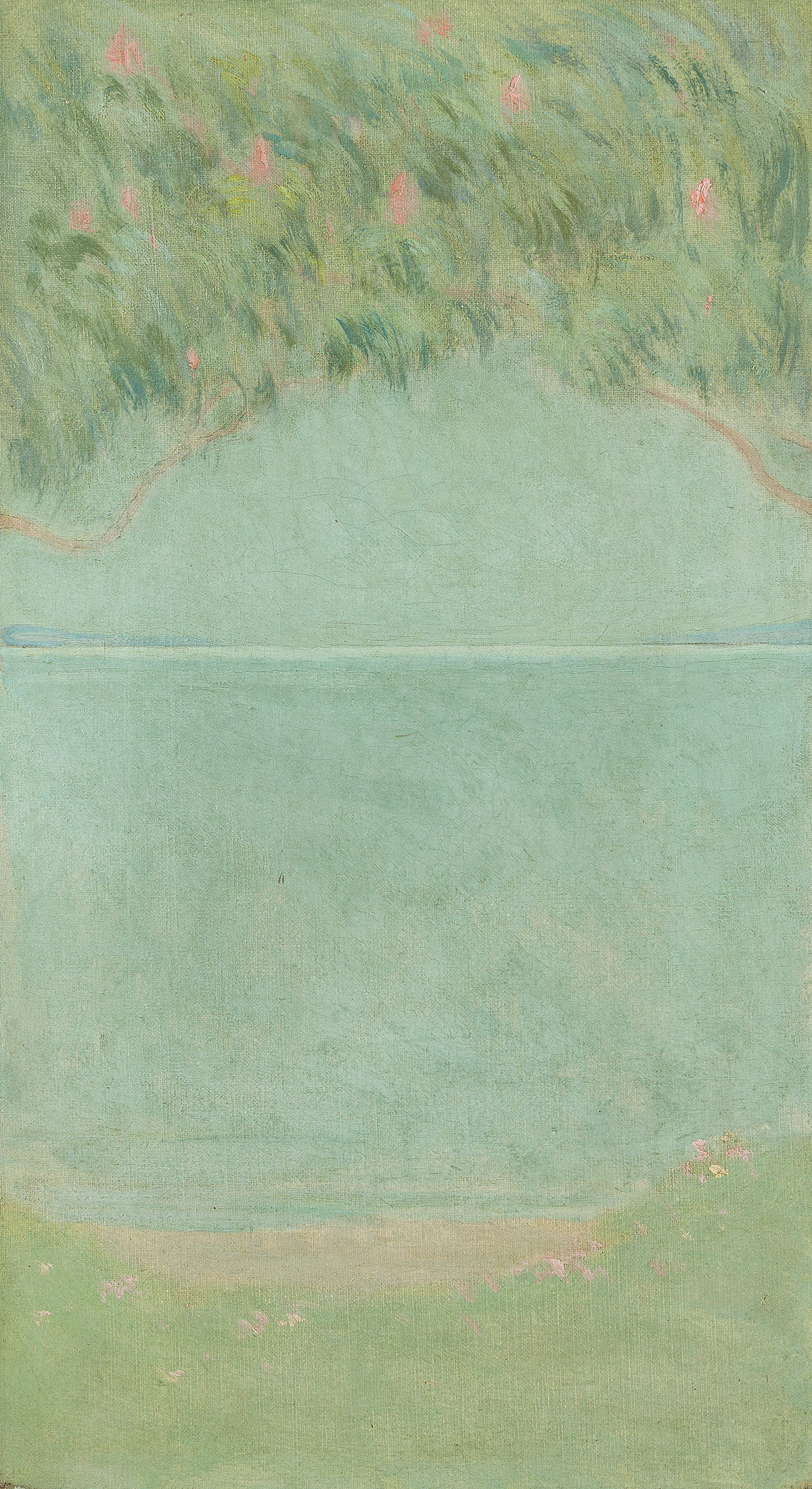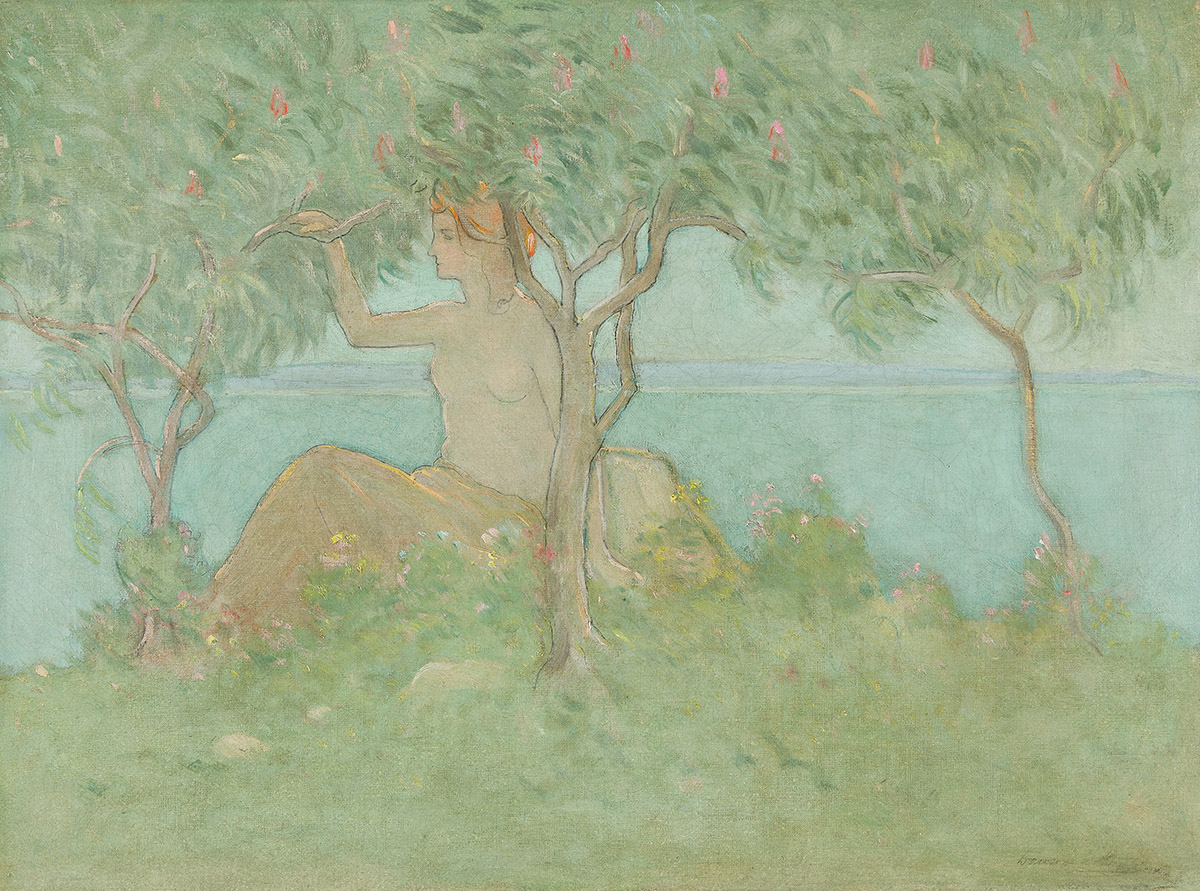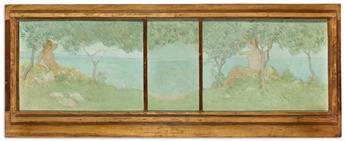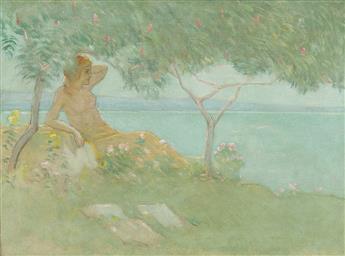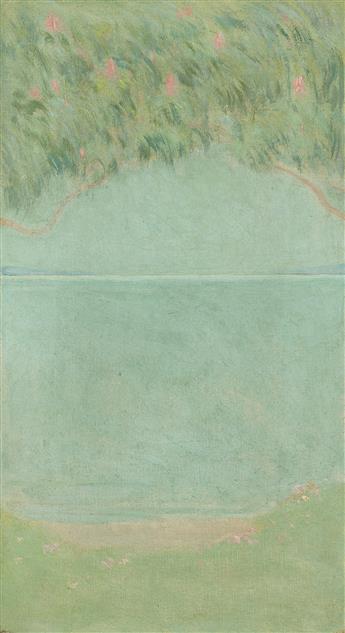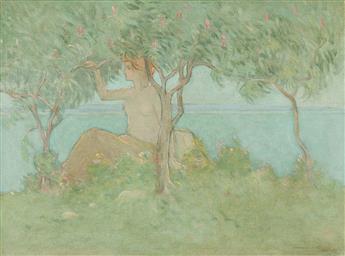Sale 2645 - Lot 33
Unsold
Estimate: $ 20,000 - $ 30,000
DAWSON DAWSON-WATSON
The Idle Days of Summer.
Oil on canvas triptych, 1909. 460x1510 mm; 18 1/8x59 1/2 inches (overall). Signed and dated in Roman numerals in oil, lower right recto.
This work has been accepted into the Dawson Dawson-Watson Catalogue Raisonné with the number P.1909.2.
Provenance: Private collection, Massachusetts.
Exhibited: "An Exhibition of Paintings, Engravings and Other Work by Mr. Dawson-Watson," City Art Museum of St. Louis, 1912, number 53 (illustrated); with a "105th Annual Exhibition," Pennsylvania Academy of the Fine Arts, Philadelphia, 1910, label affixed to the frame verso.
Dawson-Watson (1864-1939) was born in London, from an artistic family (his father was a well-known contemporary illustrator), and an artistic prodigy: his first work was accepted by the Royal Academy, London at the age of sixteen. Dawson-Watson subsequently studied in Paris and during the mid-1880s became a prominent member of the Giverny Impressionist Colony centered around Claude Monet.
Dawson-Watson and his family moved to the United States in 1893. They first stayed in Boston and then he took a position teaching art for the Hartford Art Association. During the mid-1890s he moved back to Boston and became part of the Arts and Crafts colony in Scituate, Massachusetts. The artist and his family spent the early 1900s in Quebec and there became friends with the American Tonalist painter, L. Birge Harrison (1854–1929), who was instrumental in Dawson-Watson's employment at Byrdcliffe, the important utopian Arts and Crafts Colony in Woodstock, New York. By 1904, Dawson-Watson had moved to the Midwest and he taught at the St. Louis School of Fine Arts from 1904 to 1915, when he created the current work.
Dawson-Watson began spending time in San Antonio while he was still living in St. Louis. From 1914 to 1926, he spent part of each year in San Antonio, until eventually becoming a full-time Texas resident. From 1918 to 1919, he served as director for the San Antonio Art Guild. He kept a studio in San Antonio and worked there until the end of his career in the late 1930s.
Dawson-Watson employed the same panoramic horizontal composition for his oil on canvas, Aster, Mullein, Bugloss, Bergamot, 1903, now in The Huntington Library: Art Collections and Botanical Gardens, San Marino, California, which is in a hand-carved wood frame by the artist. The current work might possibly be in a wood frame by the artist as well.
The Idle Days of Summer.
Oil on canvas triptych, 1909. 460x1510 mm; 18 1/8x59 1/2 inches (overall). Signed and dated in Roman numerals in oil, lower right recto.
This work has been accepted into the Dawson Dawson-Watson Catalogue Raisonné with the number P.1909.2.
Provenance: Private collection, Massachusetts.
Exhibited: "An Exhibition of Paintings, Engravings and Other Work by Mr. Dawson-Watson," City Art Museum of St. Louis, 1912, number 53 (illustrated); with a "105th Annual Exhibition," Pennsylvania Academy of the Fine Arts, Philadelphia, 1910, label affixed to the frame verso.
Dawson-Watson (1864-1939) was born in London, from an artistic family (his father was a well-known contemporary illustrator), and an artistic prodigy: his first work was accepted by the Royal Academy, London at the age of sixteen. Dawson-Watson subsequently studied in Paris and during the mid-1880s became a prominent member of the Giverny Impressionist Colony centered around Claude Monet.
Dawson-Watson and his family moved to the United States in 1893. They first stayed in Boston and then he took a position teaching art for the Hartford Art Association. During the mid-1890s he moved back to Boston and became part of the Arts and Crafts colony in Scituate, Massachusetts. The artist and his family spent the early 1900s in Quebec and there became friends with the American Tonalist painter, L. Birge Harrison (1854–1929), who was instrumental in Dawson-Watson's employment at Byrdcliffe, the important utopian Arts and Crafts Colony in Woodstock, New York. By 1904, Dawson-Watson had moved to the Midwest and he taught at the St. Louis School of Fine Arts from 1904 to 1915, when he created the current work.
Dawson-Watson began spending time in San Antonio while he was still living in St. Louis. From 1914 to 1926, he spent part of each year in San Antonio, until eventually becoming a full-time Texas resident. From 1918 to 1919, he served as director for the San Antonio Art Guild. He kept a studio in San Antonio and worked there until the end of his career in the late 1930s.
Dawson-Watson employed the same panoramic horizontal composition for his oil on canvas, Aster, Mullein, Bugloss, Bergamot, 1903, now in The Huntington Library: Art Collections and Botanical Gardens, San Marino, California, which is in a hand-carved wood frame by the artist. The current work might possibly be in a wood frame by the artist as well.
Exhibition Hours
Exhibition Hours
Aliquam vulputate ornare congue. Vestibulum maximus, libero in placerat faucibus, risus nisl molestie massa, ut maximus metus lectus vel lorem.



